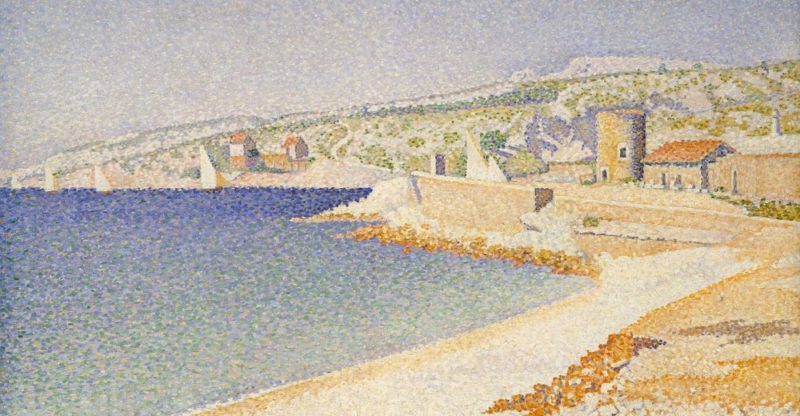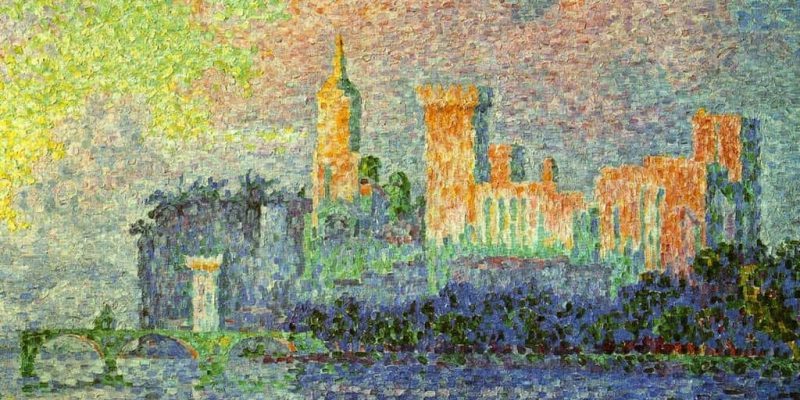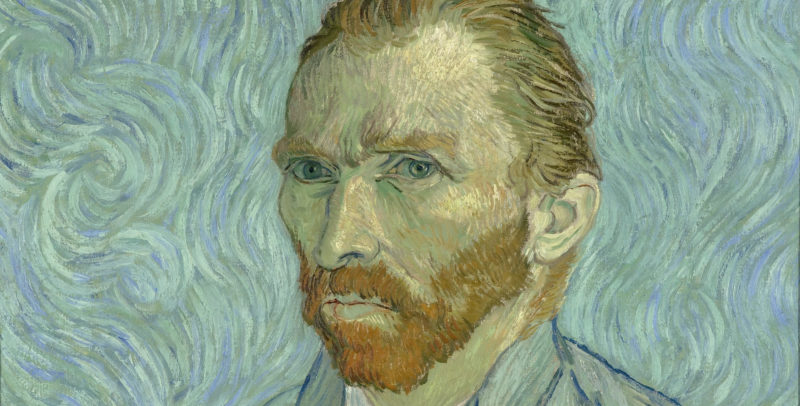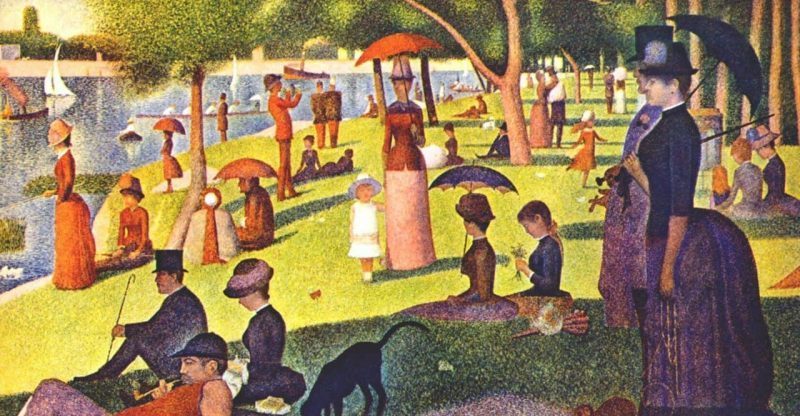We explain what pointillism is, what were its influences and techniques that it used. In addition, its characteristics and main authors.
What is Pointillism?
Pointillism or divisionism is a technique and a pictorial style that consists of creating drawings using points that, seen up close, are shown as such, but from a distance they recreate a complete and complex figure. It is framed in the schools of Post-Impressionism, although its origin lies in principles very similar to those found by the Impressionists in nature but instead of brushstrokes, the artists of this movement came to the point.
This new technique, thus, will explore the new textures and theories of color in art and take the legacy of the Impressionists further: paintings that close up are broken down into points and from a distance acquire their figurative harmony.
Pointillism or divisionism
Although the name “pointillism” was and is the most popular for the technique and even for the artistic movement that proposed it —and it certainly seems very appropriate—, two of its greatest firms: Georges Seurat and Georges Signac, never officially accepted it. and they preferred the name "divisionism", as it seemed more appropriate artistically.
History of pointillism

Pointillism first appeared in 1886, in the Salon des Indépendants , by the hand of the French painter Georges Seurat (1859-1891) , who explored the way in which cold and warm tones, arranged in small brushstrokes as a point , create complex visual sensations and combinations in the eye.
The technique soon won enthusiasts, such as Paul Signac , from the same artists' salon, and became commonplace among Neo-Impressionists of the time.
Influences of pointillism
The publication of Charles Blanc Gramatica Ades artes du dessin of 1865, was a fundamental text for pointillism, especially its theories about color in painting .
His postulate on the simultaneous contrast between colors and their complements , in fact, was fundamental in the way of painting of the Pointillists, as well as the scientific treatises of Cheverul, Sutter and Rood.
However, the most radical influence was the Impressionists themselves , who aspired to paint the light of reality through brushstrokes of color that, up close, were just that, but from a distance reproduced entire landscapes.
Pointillism technique

The pointillist technique consisted of applying just the tip of the brush to create round strokes like a dot. These points had to be combined with each other based on their color and the joint effect that was sought and could be done even on tiny surfaces.
In some cases, previous drawing (draft) was used since the pointillists faced their works with patience and tenacity . Then it would be the viewer's retina that would do the work for them, gathering the dots in a frame.
Theory of color
The pointillists obeyed a theory of color that preferred pure colors (from the rainbow palette) since they considered the mixture of colors "dirties" them, that is, it makes them tend towards black.
The pointillists put these colors together without mixing them so that the contrast between them generated the desired visual effects, although it was common to use white mixed with some of them, to achieve a lighter tone.
Pointillism order and planning

Pointillists began their paintings in the open air , like the impressionists, but they finished them in the workshop since they required a lot of time to complete.
This required a lot of ordering and planning , as well as the consideration of the work of art as a millimeter effect to be reproduced , something that pointed to mathematics and logical consideration.
Perhaps that is why geometric shapes , notions of volume, and spatial arrangement gained value in his painting , but his results were often rigid and lifeless.
Types of pointillism
More than "types", Pointillism had executions: each one depended on the mood and style of the artist who painted, despite the fact that, in principle, the chosen technique was common to all.
Main exponents of pointillism

The main exponents of the movement were Charles Angrand, Chuck Close, Henri-Edmond Cross , Henri Deavallée, Hippolyte Petitjean, Georges Lemmen, Maximilien Luce, Camille Pissarro, John Roy, Vlaho Bukovac, Paul Signac and its founder, Georges Seurat.
However, painters of the stature of Vincent van Gogh made use of the technique during some stages of their work.
Most representative works of pointillism

Some of the most representative works of the movement were La parade (1889) and Sunday afternoon on the island of La Grande Jatte (1886) by Seurat, Entry into the port of Marseille (1918) by Signac, Morning interior (1890) by Luce , or the famous Self-Portrait (1887) by van Gogh.
Impact of pointillism on other arts
""Musical pointillism" was called the attempts of some composers to achieve a kind of musical dissociation from the handling of isolated notes , similar to pictorial points and looking for a melodic equivalent of the chromatic theory.
The above content published at Collaborative Research Group is for informational and educational purposes only and has been developed by referring reliable sources and recommendations from technology experts. We do not have any contact with official entities nor do we intend to replace the information that they emit.
MA student of the TransAtlantic Masters program at UNC-Chapel Hill. Political Science with a focus on European Studies. Expressed ideas are open to revision. He not only covers Technical articles but also has skills in the fields of SEO, graphics, web development and coding. .
Leave a reply
Your email address will not be published. Required fields are marked *Recent post

Sport: What Is It, Types, Risks, Features, Characteristics and Examples

Dogs: Emergence, Features, Characteristics, Feeding and Breeds

Story: Definition, Elements, Structure, Features and Characteristics

